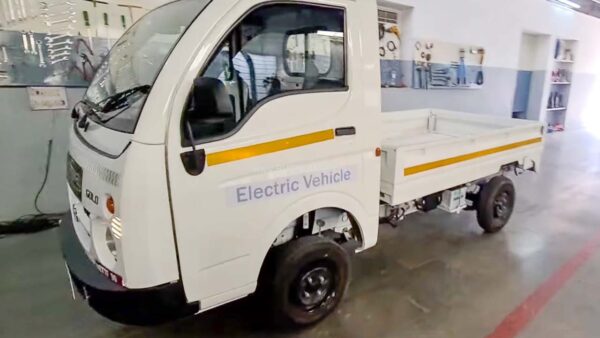Ace Ev Price

This project has proved that small commercial vehicles could run on an electric powertrain at an affordable rate without the need for a vast fast charging network
It has time and again been proven that the source of energy of future mobility will be electric. While focus has been primarily being laid on passenger vehicles and two-wheelers, the commercial vehicle segment also needs to be transferred to electric mobility in future, especially in a developing country like India.
For this, a working unit of Tata Ace, the company's most popular light commercial vehicle (LCV) has been fitted with an electric powertrain in place of a conventional Internal Combustion (IC) engine. The project vehicle has been converted for non-commercial, research and development purposes only.
Powertrain Specs
A video uploaded by Northway MotorSport on YouTube shows glimpses of this Ace Electric LCV. It gets an electric powertrain that features an 18 kWh lithium-ion battery pack paired with an electric motor.
The Proprietary EV powertrain that has been designed and manufactured in-house by the Pune-based workshop generates 165 Nm of peak torque at the Motor Shaft. Take a look at the short video on Tata Ace Electric below.
In its IC engine-powered model, the truck draws its power from a 2-cylinder, 700cc, naturally aspirated direction injection diesel engine that generates 20 bhp and 45 Nm of torque. It is also offered with a 694cc MPFI 4 stroke, water-cooled petrol engine with a rated output of 30 bhp and 55 Nm of peak torque. The same powertrain can also be run on CNG which returns an output of 25 bhp and 50 Nm of torque. In its IC-powered form, Ace could attain a top speed of 70 kmph.
On the other hand, in this battery-powered spec, Ace Electric could clock a top speed of 140 kmph but has been electronically limited to 80 kmph as per government rules and regulations for commercial vehicles. It utilises the same five-speed gearbox as in the original Ace however it eliminates the use of a clutch pedal.
The expanded torque band on the drivetrain lets the driver use just one gear (3rd or 4th) throughout 90 percent of the journey. The fifth gear is best used in long drives for better efficiency.
Charging Options
Not only emission has been cut down completely but the NVH levels of the cabin have also improved significantly. Charging is facilitated through either a normal single-phase 15A socket to charge at 3 kW or through a three-phase industrial socket at 12 kW. The smart on-board charger eliminates the need to have a fast charging network. The workshop claims that any three-phase connection could be used as a fast charger.
Previous Attempts
A similar project was initiated by Tata Motors where the automaker developed a battery-powered specifically for the UK market. It was later introduced in the UK as a mass-market LCV in 2012. However, a combination of changes in Government incentives and a sluggish take up of EV by the industry made the company discontinue Ace Electric.
Source: https://www.rushlane.com/tata-ace-modified-into-electric-vehicle-12397494.html


0 Komentar